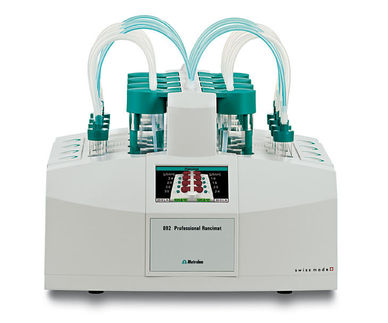| Huntingtin (Huntington disease)
|
| Identifiers
|
| Symbol(s)
| HD; HTT; IT15
|
| External IDs
| OMIM: 143100 MGI: 96067 Homologene: 1593
|
| Gene Ontology
|
| Molecular Function:
| • transcription factor activity
• steroid hormone receptor activity
• transcription corepressor activity
• transporter activity
• protein binding
• microtubule binding
|
| Cellular Component:
| • soluble fraction
• nucleus
• cytoplasm
• Golgi apparatus
|
| Biological Process:
| • regulation of transcription, DNA-dependent
• apoptosis
• induction of apoptosis
• behavior
• pathogenesis
• organ morphogenesis
|
|
| RNA expression pattern
|
|
More reference expression data
|
| Orthologs
|
|
| Human
| Mouse
|
| Entrez
| 3064
| 15194
|
| Ensembl
| ENSG00000197386
| ENSMUSG00000029104
|
| Uniprot
| P42858
| P42859
|
| Refseq
| NM_002111 (mRNA)
NP_002102 (protein)
| NM_010414 (mRNA)
NP_034544 (protein)
|
| Location
| Chr 4: 3.05 - 3.22 Mb
| Chr 5: 35.08 - 35.23 Mb
|
| Pubmed search
| [1]
| [2]
|
Huntingtin (Htt) is the protein coded by the HD gene (which itself is sometimes called the Huntingtin gene). It is variable in its structure. There are many polymorphisms of the HD gene which can lead to variable numbers of glutamine residues present. In its wild-type (normal) form, it contains 6-34 glutamine residues. In individuals affected by Huntington's Disease, an autosomal dominant genetic disorder, it contains between 35-155 glutamine residues. Huntingtin has a predicted mass of ~350kDa, however, this varies and is largely dependent on the number of glutamine residues in the protein. Normal huntingtin is generally accepted to be 3144 amino acids in size.
Function
The function of Huntingtin is unclear. It is essential for development and absence of huntingtin is lethal in mice.[1] The protein has no sequence homology with other proteins and is highly expressed in neurons and testes in humans and rodents.[2] It has however been experimentally demonstrated that Huntingtin acts as a transcription factor in upregulating the expression of Brain Derived Neurotrophic Factor (BDNF). In the deficient protein, there is suppression of this transcription regulatory function of Huntingtin and hence underexpression of BDNF.[3]
From immunohistochemistry, electron microscopy, subcellular fractionation studies of the molecule, it has been found that Huntingtin is primarily associated with vesicles and microtubules.[4][5].These appear to indicate a functional role in cytoskeletal anchoring or transport of mitochondria.
Huntingtin has also been found to interact with a number of proteins. One such protein is the Huntingtin Interacting Protein I (HIP-I/Hip-1).[6] Unfortunately the actions mediated via these interactions of huntingtin with the complementary interacting proteins are not fully understood.
Abnormal huntingtin (mHtt)
The key sequence which is found in Huntington's disease (HD) is a stretch of glutamine residues beginning at the 18th amino acid. In unaffected individuals, this stretch contains between 9 and 35 glutamine residues with no adverse effects.[7] However, individuals with HD have an expansion up to around 100 glutamines in this region of the gene. A greater number of residues is associated with earlier onset of the disease.
History
Huntingtin was identified in 1993.[8]
References
- ^ Nasir J, Floresco S, et al (1995). "Targeted disruption of the Huntington's disease gene results in embryonic lethality and behavioral and morphological changes in heterozygotes". Cell 81: 811–823. doi:10.1016/0092-8674(95)90542-1.
- ^ Cattaneo E, Zuccato C, Tartari M (2005 Dec). "Normal huntingtin function: an alternative approach to Huntington's disease". Nature Reviews Neuroscience 6: 919-930. doi:10.1038/nrn1806.
- ^ Zuccato C, Ciammola A, Rigamonti D, Leavitt BR, Goffredo D, et al (2001 Jul 20). "Loss of huntingtin-mediated BDNF gene transcription in Huntington's disease". Science 293 (5529): 445-6.
- ^ Hoffner G, Kahlem P, Djian P (2002). "Perinuclear localization of huntingtin as a consequence of its binding to microtubules through an interaction with β-tubulin: relevance to Huntington's disease". J Cell Sci 115: 941–948.
- ^ DiFiglia M, et al. (1995). "Huntingtin is a cytoplasmic protein associated with vesicles in human and rat brain neurons". Neuron 14: 1075–1081.
- ^ Wanker EE, Rovira C, Scherzinger E, Hasenbank R, Walter S, et al (1997 Mar). "HIP-I: a huntingtin interacting protein isolated by the yeast two-hybrid system". Hum. Mol. Genet. 6 (3): 487-95.
- ^ Huntington's Disease Collaborative Research Group (1993). "A novel gene containing a trinucleotide repeat that is expanded and unstable on Huntington's disease chromosomes". Cell 72: 971–983.
- ^ (1993) "A novel gene containing a trinucleotide repeat that is expanded and unstable on Huntington's disease chromosomes. The Huntington's Disease Collaborative Research Group". Cell 72 (6): 971-83. PMID 8458085.
Further reading
- MacDonald ME, Novelletto A, Lin C, et al. (1993). "The Huntington's disease candidate region exhibits many different haplotypes.". Nat. Genet. 1 (2): 99-103. doi:10.1038/ng0592-99. PMID 1302016.
- Jones AL (1999). "The localization and interactions of huntingtin.". Philos. Trans. R. Soc. Lond., B, Biol. Sci. 354 (1386): 1021-7. doi:10.1098/rstb.1999.0454. PMID 10434301.
- Young AB (2003). "Huntingtin in health and disease.". J. Clin. Invest. 111 (3): 299-302. PMID 12569151.
- Rangone H, Humbert S, Saudou F (2004). "Huntington's disease: how does huntingtin, an anti-apoptotic protein, become toxic?". Pathol. Biol. 52 (6): 338-42. doi:10.1016/j.patbio.2003.06.004. PMID 15261377.
- Li SH, Li XJ (2005). "Huntingtin and its role in neuronal degeneration.". The Neuroscientist : a review journal bringing neurobiology, neurology and psychiatry 10 (5): 467-75. doi:10.1177/1073858404266777. PMID 15359012.
- Myers RH (2005). "Huntington's disease genetics.". NeuroRx : the journal of the American Society for Experimental NeuroTherapeutics 1 (2): 255-62. PMID 15717026.
See also
- HAP1 Huntingtin-associated protein
- hip-1 Huntingtin Interacting Protein
|







